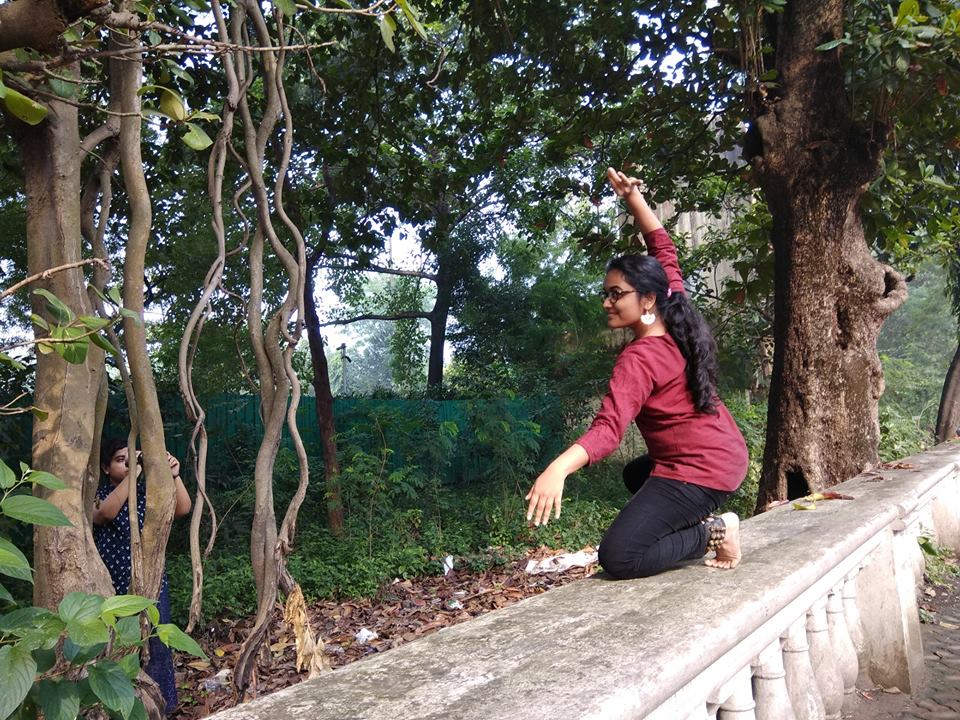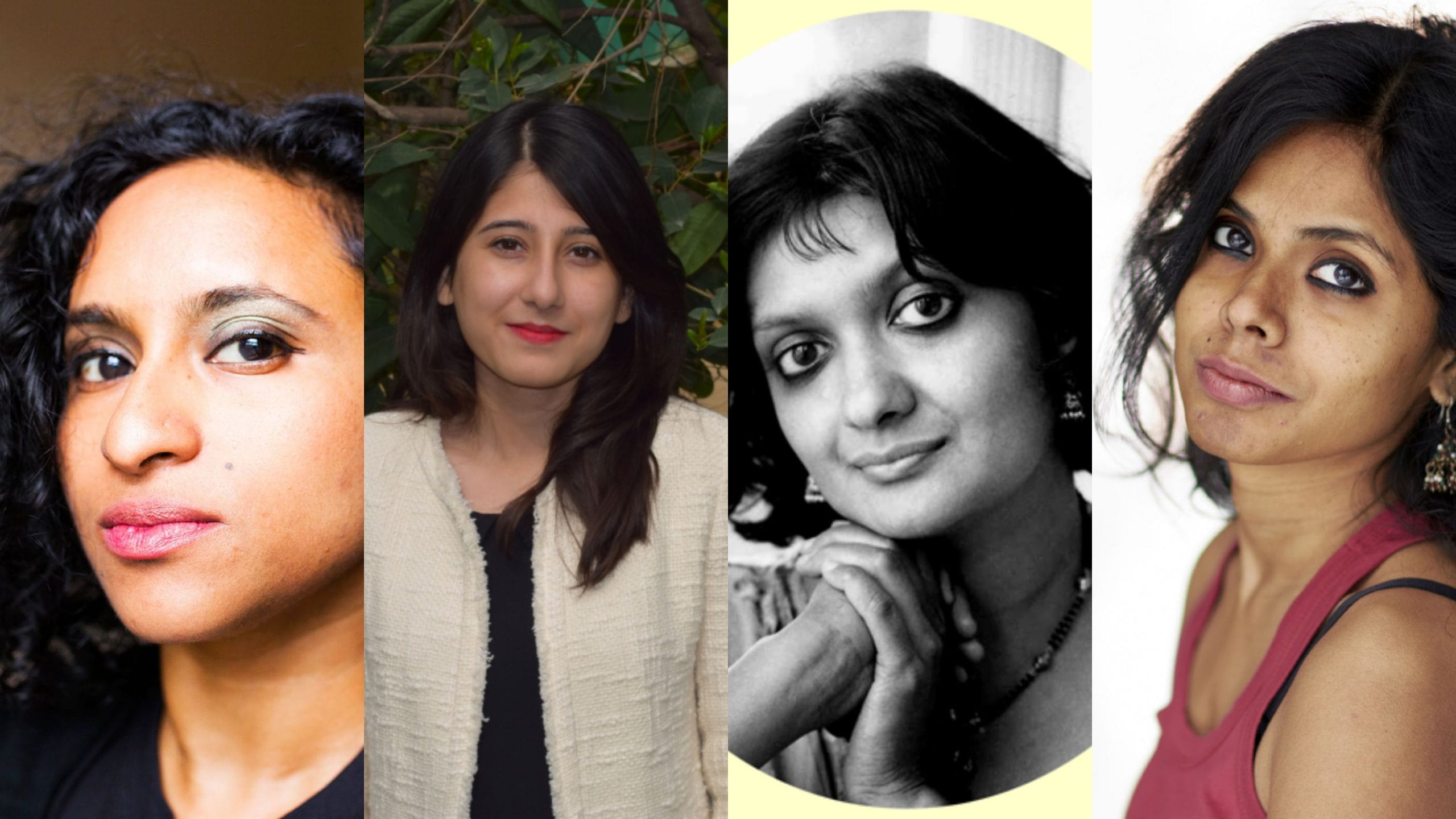Posted by Swathi Gangadharan, Priyanka Kali and Aishwarya Kali
In the August of 2016, my twin sister and I filmed our friends (Swathi Gangadharan and Tirna Sengupta) perform Bharatanatyam in a classroom. It was fairly spontaneous. Our younger sister had a dance exam coming up and she needed help with a few steps and was unable to contact her teacher for it. So, our mother wanted us to send little videos of one of our friends (who had been learning the form for over a decade) performing those steps. Our friends complied.
So, at the end of that day, we found an empty classroom. Our friends performed the steps (with stunning synchronicity) at the front of the classroom and we filmed them. We had thought it might seem strange to see them dance without music, without the appropriate attire (one of our friends was even wearing shorts) and without ghunghrus.
Maybe it did look a little strange but it was also very compelling. So, a few days later we propositioned the same friends to do more such videos and they again agreed. But nothing came of it for the next few months. We finally started our project Bharatanatyam in the Wild (BitW) in earnest around the end of October in 2016, with no equipment, our cell phone cameras and our two best friends.
“It’s really interesting what happens when your passion is bigger than the tools you have to deal with it,” to quote a film we saw recently, 20th Century Women. To this day, we are an almost entirely female team, in front of the camera and behind it.
BitW takes a classical Indian dance form to unconventional settings, and increasingly to more and more public spaces, including (but not limited to) streets.
The value of taking a classical dance form out of an auditorium was immediately evident to us. In attempting to secularise a dance form that has overtly religious associations, we have unwittingly placed ourselves in the middle of a polarizing debate.
We discovered that Bharatanatyam, more than any other classical dance form, has always been about spaces. It started as a temple dance, before moving to auditoriums in the early decades of the 20th century. We realized that our project could be subversive enough to cause serious discomfort, even provoke hateful reactions, from traditionalists.
A woman walking the streets of Delhi unafraid is a radical idea these days. So performing or filming Bharatanatyam there, where she is not only supposed to draw the least amount of attention to her body but is also supposed to be the bearer of unchanging tradition, is certainly remarkable. Bharatanatyam in the Wild (BitW) is a dance-film project that, among other things, interrogates specifically the female ownership of ostensibly free public spaces in the city.
As we grew bolder in seeking out more unconventional places to film our videos in, we came to realize that most people who were not aware of the sacral roots of the dance reacted to a much more visible aspect of the performance – the female body and the claim it had to public spaces.
Also Read: Praatohkrityo: A Dance Theatre Led By Women
It was only after we took it outside of relatively protected spaces, like our college, that we realized its radical feminist potential. When we started taking it to public spaces, it wasn’t just about the dance anymore. Every time we dance and film in a public space, we are making our presence known.
Normally, most women go about their time in the city just thankful that they are not harassed, that they manage to get from one point to another safely. As discreet and efficient as we may try to be in our operation, there is nothing discreet about dancing in a public space.
Dancing is a confident flaunting of the body, whereas hiding away and shaming the body is how patriarchy polices women. In the ‘Wild’, one cannot control one’s audience, as would happen by default in an auditorium. Our choosing to perform publicly as women, where people of different classes, castes and gender watch us, disapprovingly or otherwise, is our statement that gaze will not police us any longer. We will not be shamed into retreating into our homes.
Even as we, as dancers and filmmakers, take our art outdoors, into the urban jungle, we are always conscious, as women, of the predators that are also in the city streets. The male gaze is no harmless thing in India, but polices women and implicitly threatens them. We try to make ourselves small and invisible, occupying as little space as possible.
With BitW, we have begun to do the exact opposite. We are claiming for our bodies the right to take up space. We are asserting to the city, but most significantly, to ourselves, that these are our streets too. We are teaching ourselves to meet the public gaze, and in being unembarrassed, we are challenging its assumptions as well.
We have grown in courage and confidence along with this project, and although we still have a long way to go (night videos, for example, will forever be a tricky business), we stand for the normalization of the confident, unafraid woman and her right to assert ownership over the streets of the city that is, after all, hers
We are teaching ourselves to meet the public gaze, and in being unembarrassed, we are challenging its assumptions as well.
There is, however, a veil of respectability that is bestowed on us because of the classical nature of Bharatanatyam. We wonder if it neutralizes, to some extent, the radical nature of our project, because this veil settles upon the female body that we turn the spotlight on, making it a bearer of tradition, abstracting the solidity of it in some ways.
However, we try our best to turn this shield into a weapon, and assert our right to be here and there and everywhere as dancers, film-makers and women with no qualms at all about inviting all sorts of gazes and meeting them levelly. To quote the legendary French filmmaker, Agnes Varda, “A woman’s first feminist act is to gaze. To say, “I am looked at, but I can also look.” ”
All these experiences are impossible to condense into our usual bite-sized fare, and so, we are now working on a docu-series on BitW, the first three episodes of which are now on YouTube.
Also Read: Revelations: Celebrating LGBTQ Stories Through Bharatanatyam
Aishwarya Kali, Priyanka Kali and Swathi Gangadharan studied Literature together at Lady Shri Ram College for Women. Swathi is now in JNU doing an MA in English Literature, while Aishwarya and Priyanka are taking the year off to learn foreign languages and finish the documentary about BitW.
Besides YouTube, the BitW initiative can be followed on Instagram and Facebook as well.
Featured Image Credit: Facebook
About the author(s)
Guest Writers are writers who occasionally write on FII.




